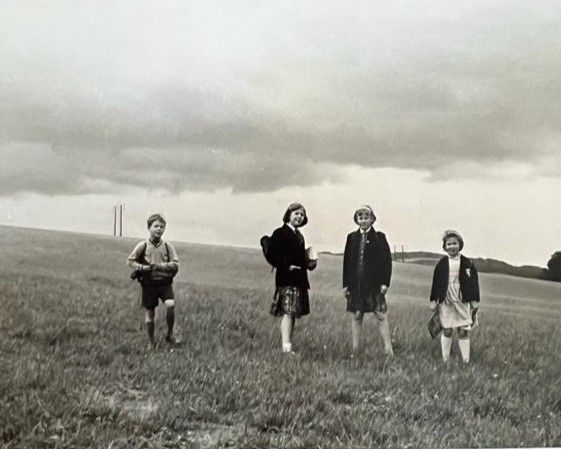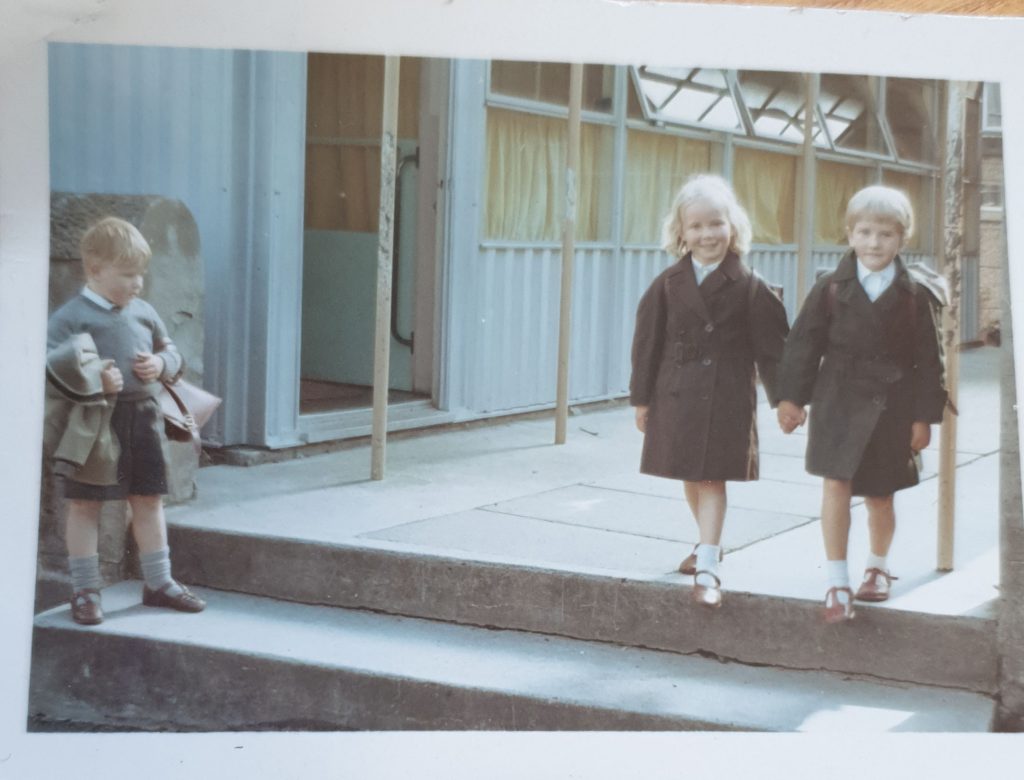
Doon the road
A small child is poking her foot into a patch of sticky tar on a narrow country road. The gooey bubbles are irresistible. She’s about to spoil her sensible walking shoes, but Laura doesn’t care. She’d rather have had nice buckle-up Start-Rites like her friend Lesley. But Lesley lives in the town and doesn’t have to walk a mile-and-a-half to get the school bus.
Every weekday morning at ten past eight, a gaggle of farm children gathers at the bottom of the steading brae. At the front, long-legged Sheila loups off, nose in a book, irritated at being the eldest and having to urge the three youngest ones to keep up. Hazel, Laura and Wee Jim are just over five years old, satchels already dragging below their elbows.
Bramble juice stains their mouths on those first late-August walks. They wander from one hedge to another, browsing like cattle on the dark purple fruit. The tastiest patch, they soon learn, is at the top of Langriggs, where the road becomes the long straight descent towards the Bad Corner. Wee Jim avidly gathers the red burnished-leather rosehips. Later he’ll pick out the furry-coated seeds to use as itching powder.
Rainy mornings bring earthworms mysteriously to the surface of the tarmac. Stepping round them is harder than hopscotch. Shiny black liquorice slugs feel their way to safety in the verge, small horns wiggling.
At Davy’s Brae Wood, there is a shower of beechnuts to collect and inspect. The three-seamed shells are easy to split and the little nuts provide another tasty treat. Laura nibbles, wistfully thinking of the packs of Beech Nut chewing gum tablets in the sweetie shop.
The autumn is harder. The children lean into the wind that bends the ash trees and walk backwards into the squalls. On white winter days they smooth the snow to peppermint cream by repeated sliding: facing sideways, right foot leading.
Best of all is the summer term when the fields offer a shortcut. The children practise their vaulting over the gates, satchels opening, reading books scattering. In the hedgerows, long strips of sticky willy cleavers are detached and velcroed sneakily onto the back of school jumpers, preferably those of Wee Jim or superior Sheila. The cow parsley which has sprung up overnight is made into improvised recorders, small fingernails digging stopholes into their sappy green corrugated stalks. Most curious and revolting is the cuckoo spit, gobbets of white froth clinging to grasses that can slap slimily onto bare legs. The real treasures are the little rainbow beetles nestling in the white flowercups of every dead nettle. Held in a small sticky palm, their iridescent wing-cases are as exciting as a Tunnock’s shiny teacake wrapper.
“Cm’ooooan you’ll miss the bus!” The call from tall Sheila is passed on to bossy Anne, and then to the two dawdling girls, who are reaching up to touch the bright faces of the dainty pink dog roses, while at their knees the bracken unfurls from its fiddleheads.


© Laura Parker